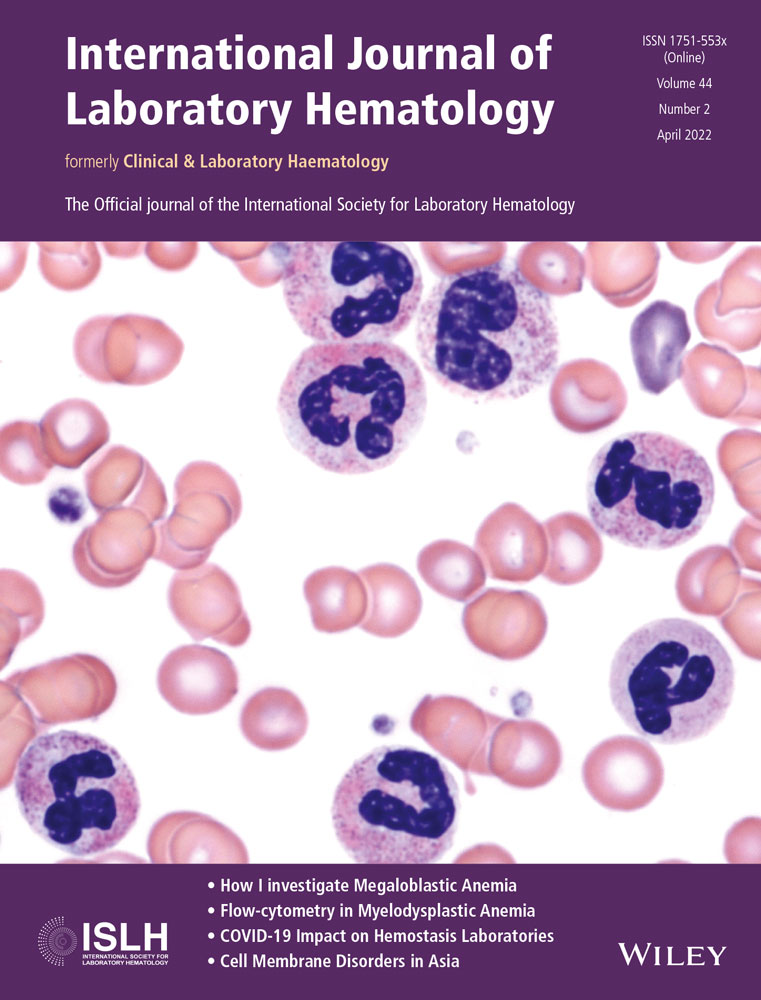Quantification of atypical BCR-ABL1 fusion transcripts in patients with chronic myeloid leukemia: Which approach for harmonization?
Dear Editors,
The BCR-ABL1 oncogene is the molecular hallmark of chronic myeloid leukemia (CML) with the majority of patients expressing e13a2 or e14a2 BCR-ABL1 transcripts. However, a small but significant minority of patients (approximately 2%) express atypical transcripts usually as a result of alternative splicing of either BCR or ABL1 exons.1 Therefore, it is likely that every laboratory which provides BCR-ABL1 monitoring for more than 50 CML patients will have encountered a patient with atypical transcripts. Molecular monitoring of BCR-ABL1 fusion transcripts is an intrinsic component of the modern management of CML with a number of tyrosine kinase inhibitors (TKI) available for front-line and subsequent therapy if required. Enormous local, national, continental, and global efforts have been undertaken to standardize and harmonize BCR-ABL1 measurement by reverse transcriptase-quantitative polymerase chain reaction (RT-qPCR) in CML patients over the last two decades, driven initially for comparison of data from different laboratories and the interpretation of clinical studies of TKIs, and more recently by the requirement for definitions of deep molecular responses necessary for TKI discontinuation with the aim of achieving a treatment-free remission (TFR).2 These efforts to align measurements to an International Scale have however focused on the common e13a2 and e14a2 BCR-ABL1 transcript types with a noticeable lack of technical standardization for those patients expressing atypical transcripts. To date, most cases or case series have employed an ad hoc RT-qPCR approach. Given that the overall survival of CML patients now approximates that of the general population (meaning more CML patients with atypical transcripts will require monitoring for longer),3 that emerging data suggest that CML patients with atypical BCR-AL1 transcripts can respond differently to TKIs,4 and the ambiguity in current CML management guidelines as to whether patients expressing atypical BCR-ABL1 transcripts should be considered for TFR,5, 6 standardization of BCR-ABL1 assays for these atypical variants has remained an unmet clinical need.
Two technical approaches have been recently proposed to address this issue of standardization in CML patients expressing atypical BCR-ABL1 transcripts. The most widely adopted approach for BCR-ABL1 quantification has been RT-qPCR, and it is an adaptation of this methodology that has been proposed by the EUTOS cooperative network to standardize reporting of atypical BCR-ABL1 transcript measurement.7 Schäfer et al.7 carried out RT-qPCR with transcript-specific primers and probes using serial dilutions of appropriate BCR-ABL1 and GUSB reference gene plasmid DNA calibrators. Results are expressed as an individual molecular response (IMR) relative to the patient-specific baseline value. Furthermore, in cases of undetectable BCR-ABL1, these IMR levels may be scored based on GUSB reference gene transcript numbers and similar criteria as for deep molecular response scoring on the International Scale.2
An alternative to RT-qPCR for the absolute quantification of BCR-ABL1 transcripts is droplet digital PCR (ddPCR). Advantages of ddPCR are reported to be an increase in the detection limit achieved by partitioning the sample into thousands of independent PCR reactions thus increasing the effective concentration, that ddPCR is less prone to variations in amplification efficiency by measuring the end-point of amplification, and the lack of requirement for a calibrated standard curve enabling absolute quantification of target molecules. Cumulative evidence is building on the similar, if not superior assay characteristics of ddPCR in CML patients expressing the common e13a2 and e14a2 BCR-ABL1 transcript types, particularly in measuring deep molecular response and subsequent prediction of those patients most likely to succeed in a TFR attempt.8 Proof of principle for quantification of atypical BCR-ABL1 transcripts has been demonstrated with this observation successfully expanded to encompass BCR-ABL1 monitoring by ddPCR during TFR attempts.9, 10 A current disadvantage of ddPCR is the cost compared with conventional laboratory-developed RT-qPCR tests,11 though throughput might not necessarily be an impediment given the relatively fewer number of CML patients with atypical transcripts than those expressing e13a2 and e14a2 BCR-ABL1.
Given the current, wide availability, and use of RT-qPCR platforms, this approach appears the most likely to be initially adopted. However, the increasing acceptance of ddPCR as a more reproducible, sensitive, and accurate indicator of deep molecular response, particularly when considering TFR, provides an emerging alternative for the molecular monitoring of those CML patients with atypical BCR-ABL1 transcripts.
ACKNOWLEDGEMENTS
None.
CONFLICT OF INTEREST
The authors have no conflict of interest.
Open Research
DATA AVAILABILITY STATEMENT
Data sharing is not applicable to this article as no new data were created or analyzed in this study.




